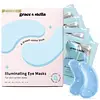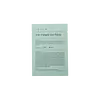What's inside
What's inside
 Key Ingredients
Key Ingredients

 Benefits
Benefits

 Concerns
Concerns

 Ingredients Side-by-side
Ingredients Side-by-side

Water
Skin ConditioningGlycerin
HumectantButylene Glycol
HumectantCarrageenan
Niacinamide
Smoothing1,2-Hexanediol
Skin ConditioningXanthan Gum
EmulsifyingHydroxyacetophenone
AntioxidantPropylene Glycol
HumectantAllantoin
Skin ConditioningSodium Hyaluronate
HumectantCaprylyl Glycol
EmollientEthylhexylglycerin
Skin ConditioningHydrolyzed Vegetable Protein
Skin ConditioningGlycyrrhiza Glabra Root Extract
BleachingCentella Asiatica Extract
CleansingPolygonum Cuspidatum Root Extract
AntioxidantCamellia Sinensis Leaf Extract
AntimicrobialRosmarinus Officinalis Leaf Extract
AntimicrobialCI 74160
Cosmetic ColorantCI 77891
Cosmetic ColorantPolysorbate 80
EmulsifyingAluminum Hydroxide
EmollientPhenoxyethanol
PreservativeSodium Citrate
BufferingWater, Glycerin, Butylene Glycol, Carrageenan, Niacinamide, 1,2-Hexanediol, Xanthan Gum, Hydroxyacetophenone, Propylene Glycol, Allantoin, Sodium Hyaluronate, Caprylyl Glycol, Ethylhexylglycerin, Hydrolyzed Vegetable Protein, Glycyrrhiza Glabra Root Extract, Centella Asiatica Extract, Polygonum Cuspidatum Root Extract, Camellia Sinensis Leaf Extract, Rosmarinus Officinalis Leaf Extract, CI 74160, CI 77891, Polysorbate 80, Aluminum Hydroxide, Phenoxyethanol, Sodium Citrate
Water
Skin ConditioningGlycerin
Humectant1,2-Hexanediol
Skin ConditioningAgar
MaskingCharcoal Powder
AbrasiveCaffeine
Skin ConditioningCamellia Sinensis Leaf Extract
AntimicrobialCitric Acid
BufferingCoptis Japonica Extract
AntimicrobialZingiber Officinale Root Extract
MaskingCentella Asiatica Extract
CleansingSchisandra Chinensis Fruit Extract
Skin ConditioningCalendula Officinalis Flower Extract
MaskingBambusa Vulgaris Extract
Skin ConditioningPalmitoyl Olive Leaf Extract
AntioxidantGlycyrrhiza Glabra Root Extract
BleachingTaraxacum Officinale Leaf Extract
Skin ConditioningOriganum Vulgare Leaf Extract
Skin ConditioningChamaecyparis Obtusa Leaf Extract
Skin ConditioningSalix Alba Bark Extract
AstringentLactobacillus/Soybean Ferment Extract
Skin ConditioningPortulaca Oleracea Extract
Skin ConditioningCinnamomum Cassia Bark Extract
MaskingScutellaria Baicalensis Root Extract
AstringentRosa Damascena Flower Extract
MaskingRhodiola Rosea Root Extract
EmollientEvernia Prunastri Lichen Extract
PerfumingZanthoxylum Piperitum Fruit Extract
Skin ConditioningPulsatilla Koreana Extract
Skin ConditioningHydrolyzed Hyaluronic Acid
HumectantXanthan Gum
EmulsifyingCeratonia Siliqua Gum
EmollientButylene Glycol
HumectantCarrageenan
Carbomer
Emulsion StabilisingAllantoin
Skin ConditioningCI 77499
Cosmetic ColorantSucrose
HumectantMica
Cosmetic ColorantCI 77891
Cosmetic ColorantEthylhexylglycerin
Skin ConditioningDisodium EDTA
Ectoin
Skin ConditioningSodium Acetylated Hyaluronate
HumectantSodium Hyaluronate
HumectantWater, Glycerin, 1,2-Hexanediol, Agar, Charcoal Powder, Caffeine, Camellia Sinensis Leaf Extract, Citric Acid, Coptis Japonica Extract, Zingiber Officinale Root Extract, Centella Asiatica Extract, Schisandra Chinensis Fruit Extract, Calendula Officinalis Flower Extract, Bambusa Vulgaris Extract, Palmitoyl Olive Leaf Extract, Glycyrrhiza Glabra Root Extract, Taraxacum Officinale Leaf Extract, Origanum Vulgare Leaf Extract, Chamaecyparis Obtusa Leaf Extract, Salix Alba Bark Extract, Lactobacillus/Soybean Ferment Extract, Portulaca Oleracea Extract, Cinnamomum Cassia Bark Extract, Scutellaria Baicalensis Root Extract, Rosa Damascena Flower Extract, Rhodiola Rosea Root Extract, Evernia Prunastri Lichen Extract, Zanthoxylum Piperitum Fruit Extract, Pulsatilla Koreana Extract, Hydrolyzed Hyaluronic Acid, Xanthan Gum, Ceratonia Siliqua Gum, Butylene Glycol, Carrageenan, Carbomer, Allantoin, CI 77499, Sucrose, Mica, CI 77891, Ethylhexylglycerin, Disodium EDTA, Ectoin, Sodium Acetylated Hyaluronate, Sodium Hyaluronate
Ingredients Explained
These ingredients are found in both products.
Ingredients higher up in an ingredient list are typically present in a larger amount.
1,2-Hexanediol is a synthetic liquid and another multi-functional powerhouse.
It is a:
- Humectant, drawing moisture into the skin
- Emollient, helping to soften skin
- Solvent, dispersing and stabilizing formulas
- Preservative booster, enhancing the antimicrobial activity of other preservatives
Allantoin is a soothing ingredient known for its protective and moisturizingg properties. Because of this, it is often added to products with strong active ingredients.
Studies show higher concentrations of this ingredient can promote wound healing.
Though it can be derived from the comfrey plant, allantoin is produced synthetically for cosmetic products to ensure purity.
Learn more about AllantoinButylene Glycol (or BG) is used within cosmetic products for a few different reasons:
Overall, Butylene Glycol is a safe and well-rounded ingredient that works well with other ingredients.
Though this ingredient works well with most skin types, some people with sensitive skin may experience a reaction such as allergic rashes, closed comedones, or itchiness.
Learn more about Butylene GlycolCamellia Sinensis Leaf Extract is derived from the leaves of the tea plant. Black tea, green tea, and oolong tea are all harvested from this plant.
This ingredient has many skin benefits:
This ingredient contains polyphenols, a strong antioxidant. Antioxidants help fight off molecules that damage skin cells.
On top of that, the antioxidants in green tea neutralize free-radicals from the sun. This gives the skin some extra UV protection, but should not replace sunscreen.
Many components of tea have anti-inflammatory properties.
Polyphenols and L-theanine help soothe the skin and reduce irritation. The caffeine in Camellia Sinensis Leaf Extract helps calm inflamed blood vessels.
Other compounds found in tea include: Vitamin Bs, linoleic acid, magnesium, calcium, iron, and zinc.
Research has shown both drinking Camellia Sinensis Leaf Tea and applying it to the skin can help boost skin elasticity and hydration. Studies also show using tea extract may reduce sebum, or oil, production.
Learn more about Camellia Sinensis Leaf ExtractCarrageenan comes from red seaweed or algae. It is made up of polysaccharides and a highly flexible compound. Red algae cell walls are rich in carrageenan.
In cosmetics, it helps to thicken the texture. Studies show carrageenan extracted from red algae possess antioxidant properties. Components found in carrageenan include: lipids, fatty acids, Vitamin E, proteins, and several amino acids.
Learn more about different types of algae.
Carrageenan is also commonly used in medicine and food. It is a vegan alternative to animal-based gelatin.
Learn more about CarrageenanCentella Asiatica Extract (Centella) is derived from an herb native to Southeast Asia. It is famous for its anti-inflammatory and soothing properties.
Centella is rich in antioxidants and amino acids, such as Madecassic Acid and Asiaticoside.
Studies show the compounds in centella help with:
The combination of all these properties makes centella effective at soothing, hydrating, and protecting the skin.
Other great components of centella include Vitamin A, vitamin C, several B vitamins, and Asiatic Acid.
Fun fact: Centella has been used as a medicine and in food for many centuries. As a medicine, it is used to treat burns, scratches, and wounds.
Learn more about Centella Asiatica ExtractCi 77891 is a white pigment from Titanium dioxide. It is naturally found in minerals such as rutile and ilmenite.
It's main function is to add a white color to cosmetics. It can also be mixed with other colors to create different shades.
Ci 77891 is commonly found in sunscreens due to its ability to block UV rays.
Learn more about CI 77891Ethylhexylglycerin (we can't pronounce this either) is commonly used as a preservative and skin softener. It is derived from glyceryl.
You might see Ethylhexylglycerin often paired with other preservatives such as phenoxyethanol. Ethylhexylglycerin has been found to increase the effectiveness of these other preservatives.
Glycerin is already naturally found in your skin. It helps moisturize and protect your skin.
A study from 2016 found glycerin to be more effective as a humectant than AHAs and hyaluronic acid.
As a humectant, it helps the skin stay hydrated by pulling moisture to your skin. The low molecular weight of glycerin allows it to pull moisture into the deeper layers of your skin.
Hydrated skin improves your skin barrier; Your skin barrier helps protect against irritants and bacteria.
Glycerin has also been found to have antimicrobial and antiviral properties. Due to these properties, glycerin is often used in wound and burn treatments.
In cosmetics, glycerin is usually derived from plants such as soybean or palm. However, it can also be sourced from animals, such as tallow or animal fat.
This ingredient is organic, colorless, odorless, and non-toxic.
Glycerin is the name for this ingredient in American English. British English uses Glycerol/Glycerine.
Learn more about GlycerinGlycyrrhiza Glabra Root Extract is an extract of the roots of Licorice. It has been found to have several benefits such as skin hydrating, conditioning, and soothing.
One component, glabridin, has extra potent antioxidant and soothing properties. It has also been found to block pigmentation from UVB rays in guinea pigs.
Licorice Root also contains a flavonoid. Flavonoids are a natural substance from in plants. Flavonoids also have antioxidant properties.
Another component, glycyrrhizin, has been found to have anti-inflammatory and antimicrobial benefits. This may make licorice root extract effective at treating acne. However, more research is needed to support this.
Liquiritin is one of the flavone compounds found in licorice. It has been found to help lighten skin by preventing tyrosinase from reacting with tyrosine. When the two react, protein is converted to melanin. Melanin is the substance in your body that gives your features pigmentation.
Learn more about Glycyrrhiza Glabra Root ExtractSodium Hyaluronate is hyaluronic acid's salt form. It is commonly derived from the sodium salt of hyaluronic acid.
Like hyaluronic acid, it is great at holding water and acts as a humectant. This makes it a great skin hydrating ingredient.
Sodium Hyaluronate is naturally occurring in our bodies and is mostly found in eye fluid and joints.
These are some other common types of Hyaluronic Acid:
Learn more about Sodium HyaluronateWater. It's the most common cosmetic ingredient of all. You'll usually see it at the top of ingredient lists, meaning that it makes up the largest part of the product.
So why is it so popular? Water most often acts as a solvent - this means that it helps dissolve other ingredients into the formulation.
You'll also recognize water as that liquid we all need to stay alive. If you see this, drink a glass of water. Stay hydrated!
Learn more about WaterXanthan gum is used as a stabilizer and thickener within cosmetic products. It helps give products a sticky, thick feeling - preventing them from being too runny.
On the technical side of things, xanthan gum is a polysaccharide - a combination consisting of multiple sugar molecules bonded together.
Xanthan gum is a pretty common and great ingredient. It is a natural, non-toxic, non-irritating ingredient that is also commonly used in food products.
Learn more about Xanthan Gum